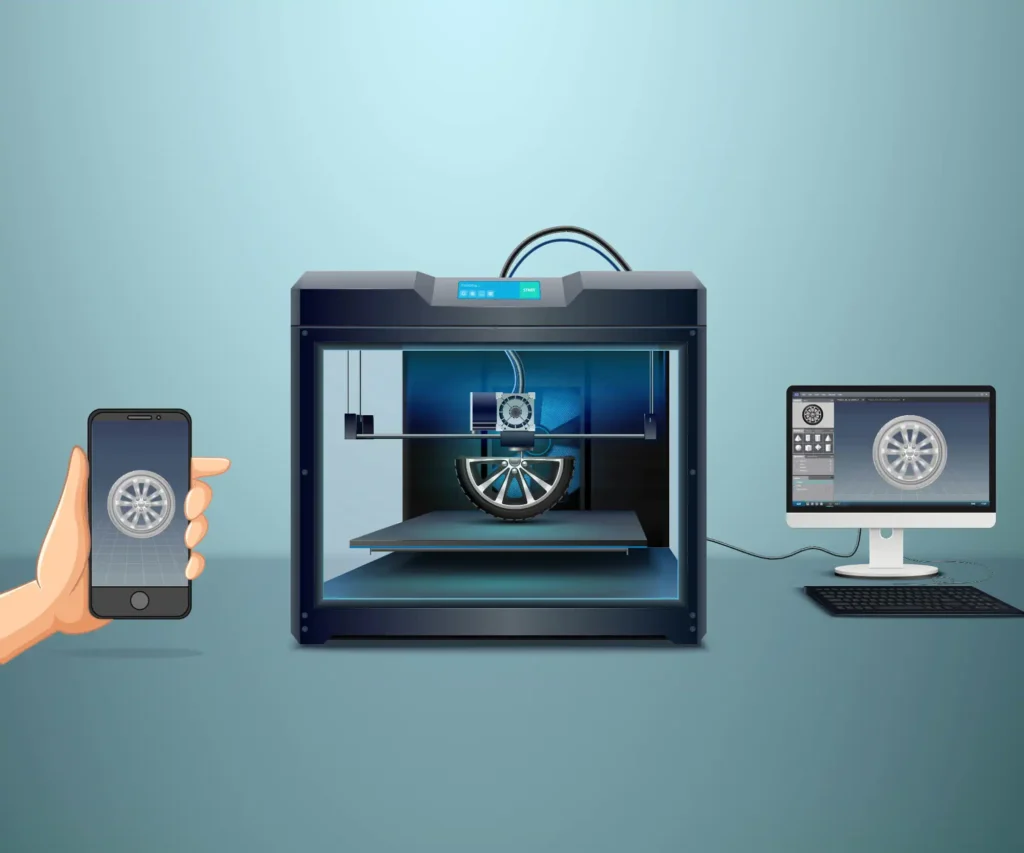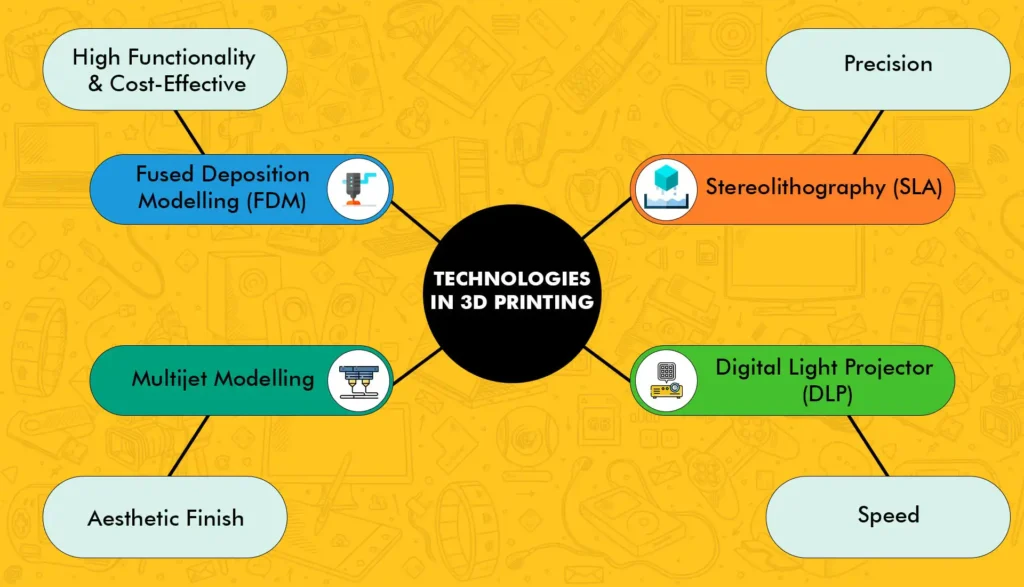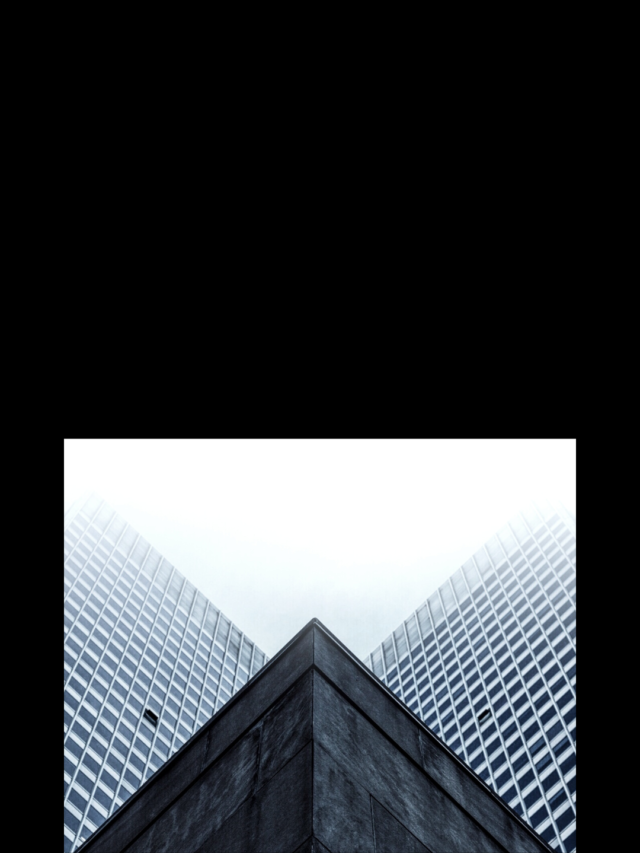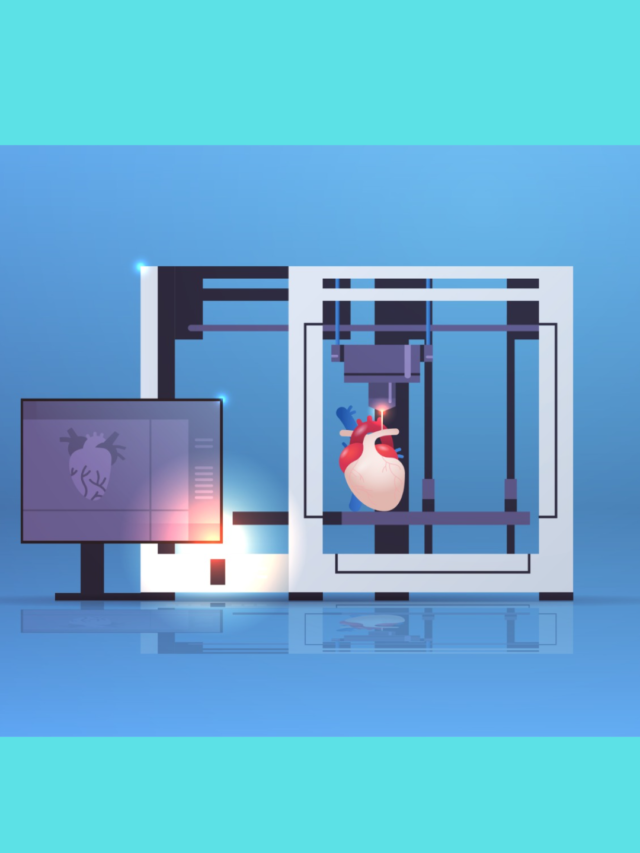
Why have “alright” when you can have “awesome”? Would you rather have one of the tallest buildings in the world or the Burj Khalifa? Why, indeed, have two dimensions when you can have three? Three-dimensional printing was conceptualised in the late 1970s. After years of digital evolution, we now find ourselves at an advanced stage. It wouldn’t be shocking if you found a 3D printer at your favourite fancy restaurant or your kid’s school, an art gallery you frequent, or even in your quirky friend’s home. Recently, it has gained even more traction thanks to its many applications and uses. Many of you may have heard of 3D printed houses. If you think this idea is as baffling as it is exciting, you have come to the right place. Read on to know more about 3D printing, how these printers work, and much more.
What is 3D printing?
3D printers create three-dimensional objects using various materials as “cartridges”. The printing material is laid down in layers filling it across length, breadth, and height. This process is called additive manufacturing. In additive manufacturing, you build something from scratch by adding layers to it unlike subtractive methods such as drilling, slicing, and sawing. By converting data or models made using computer-aided design (CAD) into a physical object that you can touch and feel instead of just see, 3D printers are revolutionising perception and cognition in a wide spectrum of places, from boardrooms to laboratories.
How do 3D printers work?
Essentially, 3D printers are plotters that move along X and Y axes, forming specific patterns. These patterns are then overlaid with other identical layers, thus adding ‘depth’ to the model. Another way to imagine it is by picturing the nozzle or the print head moving back and forth, secreting a thin string of material (plastic, metal, ceramic, etc.), forming the first layer of the model. The nozzle then moves up, and it starts the next layer. The printer repeats this process until the model is complete.
3D printing technologies
The 3D printing technology that Chuck Hull pioneered in 1986 was a revolutionary breakthrough. Over the years, this has been honed and significantly improved. Today, you can print 3D objects using different technologies to serve various purposes. For example, in cases where you need intricate details, smooth surfaces, and tightness of quality, you can use stereolithography or SLA. This is the preferred choice in the automotive, aerospace, and entertainment industries. In SLA, UV radiation beams carve out the object’s shape.
Another method fairly similar to this is called Digital Light Projector or DLP. However, instead of UV radiation beams, this method uses projectors. Though DLP 3D printing is much faster than SLA, the projector’s resolution affects that of the printed object. Thus, people often choose SLA for high precision objects, but if time is of the essence, DLP is the way to go.
In some cases, functionality supersedes the aesthetic value. Then, it is common to use a different technology that allows for specialised materials. These materials offer higher heat resistance, impact resistance, chemical resistance, and rigidity. This cheap and efficient technology, most often used in mechanical engineering or parts manufacturing, is called Fused Deposition Modelling or FDM.
Aside from function, speed, and accuracy, the final look of the output also matters. And a monochromatic world just doesn’t cut it for some of us. So surely there has to be a way to 3D print colourful objects? With a type of 3D printing called multijet modelling, you can use colourful binding agents such as glue, resin, or even different types of edible substances like frosting for 3D printing something pretty and yummy!
While these methods sound complex, they are actually rather straightforward and fascinating. Moreover, with the onset of 3D printing as a mainstream hobby, it may soon become a mere walk in the park.

What can we 3D print?
With 3D printing, massive breakthroughs have been possible in diverse and wide-ranging industries. Be it manufacturing, construction, healthcare, or more eclectic realms like jewellery and art; this technology is making its presence felt in all ‘dimensions’.
1) Manufacturing
In manufacturing, 3D printing may be the most optimisable option. It allows for relatively inexpensive production in customised volumes or on a case-by-case basis. Furthermore, thanks to cloud computing technologies, consumers can build parts and objects remotely using cloud-based additive manufacturing without purchasing expensive 3D printers. These services have proved advantageous in several sectors, including the energy sector. With lightweight components, cost-effective services, and environmentally friendly materials, energy companies can now solve some of the most challenging problems.
Companies like Chevron, Shell Global, BP Global, and GE Oil & Gas have published stories about their use of additive manufacturing for prototyping and production applications in their industry. For example, the oil and gas industry requires several parts that meet stringent environmental standards without compromising sturdiness and performance. With 3D printing, it is possible to acquire dense, corrosion-resistant, strong, and tensile metals and metal objects in cost-effective, emission-friendly ways. In addition, several spare parts that might otherwise take a while to manufacture can be 3D printed instead, making them available on demand.
The manufacture of spare parts is becoming an increasingly important application of 3D printing in the energy sector. However, the high cost of downtime and the logistical challenges of distribution to widespread, remote locations have led to overstocking spare parts. 3D printing provides a solution through fast, on-demand printing of legacy parts from an on-site system or a 3D printing service provider.
2) Construction
Construction-specific 3D printers have been gradually changing the world. They allow faster and more accurate construction of complex or bespoke items as well as lower labour costs and lesser waste production. These printers not only create construction components but also ‘print’ entire buildings. In 2016, Dubai became home to the first-ever 3D printed office. In fact, Dubai also flaunts the largest 3D printed building in the world. According to a report by Grand View Research, the global 3D construction market has the potential to grow by 91% between 2021 and 2028.
3) Medicine
The influence of 3D printing in medicine, too, has been undeniable. A significant advantage has been the advent of bioprinting, which uses biomaterials to create tissue-like structures that closely imitate actual organs. The printing of artificial organs also eases the process of organ donation and transplants. This consequently reduces the pressure on the transplant ecosystem to an extent. 3D printing can also be used for creating metal implants in orthopaedics. These are porous enough to enmesh with the patient’s bones, allowing seamless transitions. Furthermore, 3D printers can also print extremely porous pills. These pills are more accurate in terms of dosage and easier to digest.
Future of 3D printing
In 2020, Sheikh Hamdan bin Mohammed bin Rashid Al Maktoum, the crown prince of Dubai, announced the launch of the 3D Printing Strategic Alliance. This platform aims to develop, test, and implement 3D printing on a large scale. The Government of Dubai has also unveiled the world’s first 3D printed research lab. The lab will design and build rovers, drones, and other prototypes under the supervision of the Dubai Electricity and Water Authority (DEWA). In a bid to reduce its reliance on imports, Dubai is already marching toward becoming a leading hub for 3D printing technology in the Arab world. According to 6WResearch, due to rapid industrialisation and increased corporate initiatives, the UAE 3D printing market will likely lead the Middle East in years to come.
Aside from promising projections for the next decade, 3D printing has much to offer. The monumental growth in its global market value already is a strong indicator that its future is quite secure. This is not to say that additive manufacturing will replace traditional manufacturing. However, as more and more countries start to explore its varied features and innovate further applications from it, 3D printing will only continue to expand its manufacturing network.




